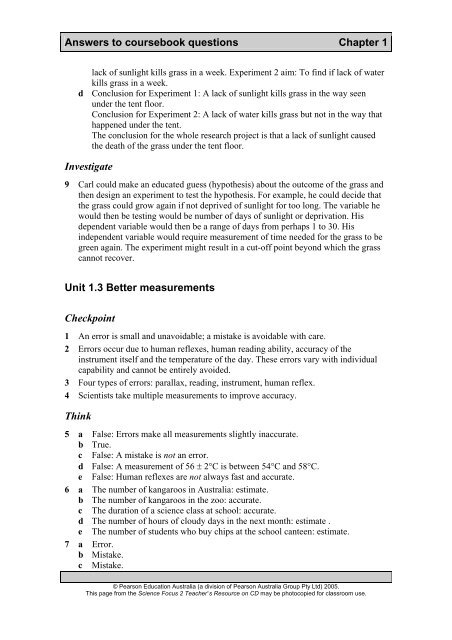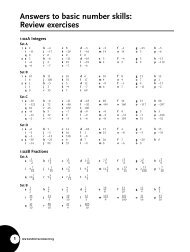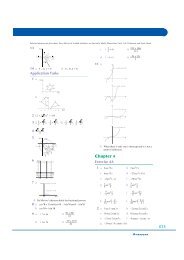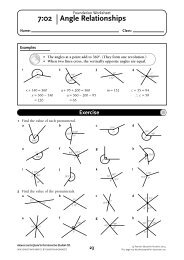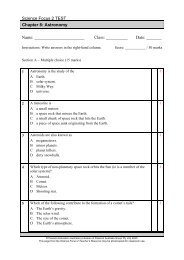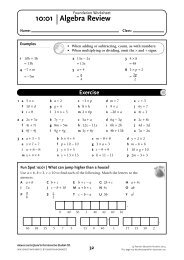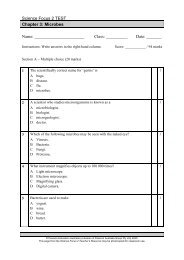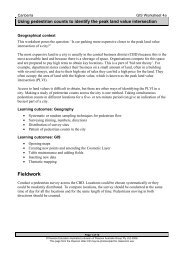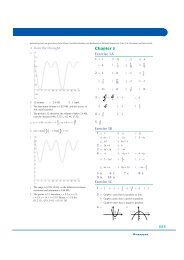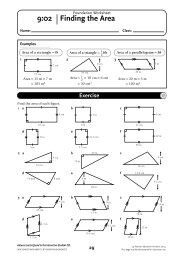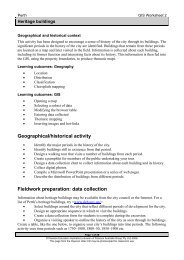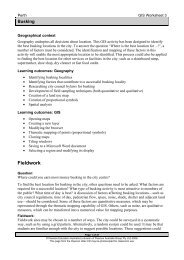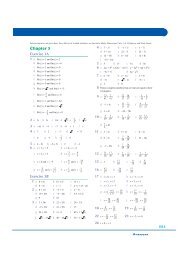Science Focus 2 - Coursebook Answers - Pearson Australia Media ...
Science Focus 2 - Coursebook Answers - Pearson Australia Media ...
Science Focus 2 - Coursebook Answers - Pearson Australia Media ...
Create successful ePaper yourself
Turn your PDF publications into a flip-book with our unique Google optimized e-Paper software.
<strong>Answers</strong> to coursebook questions Chapter 1lack of sunlight kills grass in a week. Experiment 2 aim: To find if lack of waterkills grass in a week.d Conclusion for Experiment 1: A lack of sunlight kills grass in the way seenunder the tent floor.Conclusion for Experiment 2: A lack of water kills grass but not in the way thathappened under the tent.The conclusion for the whole research project is that a lack of sunlight causedthe death of the grass under the tent floor.Investigate9 Carl could make an educated guess (hypothesis) about the outcome of the grass andthen design an experiment to test the hypothesis. For example, he could decide thatthe grass could grow again if not deprived of sunlight for too long. The variable hewould then be testing would be number of days of sunlight or deprivation. Hisdependent variable would then be a range of days from perhaps 1 to 30. Hisindependent variable would require measurement of time needed for the grass to begreen again. The experiment might result in a cut-off point beyond which the grasscannot recover.Unit 1.3 Better measurementsCheckpoint1 An error is small and unavoidable; a mistake is avoidable with care.2 Errors occur due to human reflexes, human reading ability, accuracy of theinstrument itself and the temperature of the day. These errors vary with individualcapability and cannot be entirely avoided.3 Four types of errors: parallax, reading, instrument, human reflex.4 Scientists take multiple measurements to improve accuracy.Think5 a False: Errors make all measurements slightly inaccurate.b True.c False: A mistake is not an error.d False: A measurement of 56 ± 2°C is between 54°C and 58°C.e False: Human reflexes are not always fast and accurate.6 a The number of kangaroos in <strong>Australia</strong>: estimate.b The number of kangaroos in the zoo: accurate.c The duration of a science class at school: accurate.d The number of hours of cloudy days in the next month: estimate .e The number of students who buy chips at the school canteen: estimate.7 a Error.b Mistake.c Mistake.© <strong>Pearson</strong> Education <strong>Australia</strong> (a division of <strong>Pearson</strong> <strong>Australia</strong> Group Pty Ltd) 2005.This page from the <strong>Science</strong> <strong>Focus</strong> 2 Teacher’s Resource on CD may be photocopied for classroom use.


